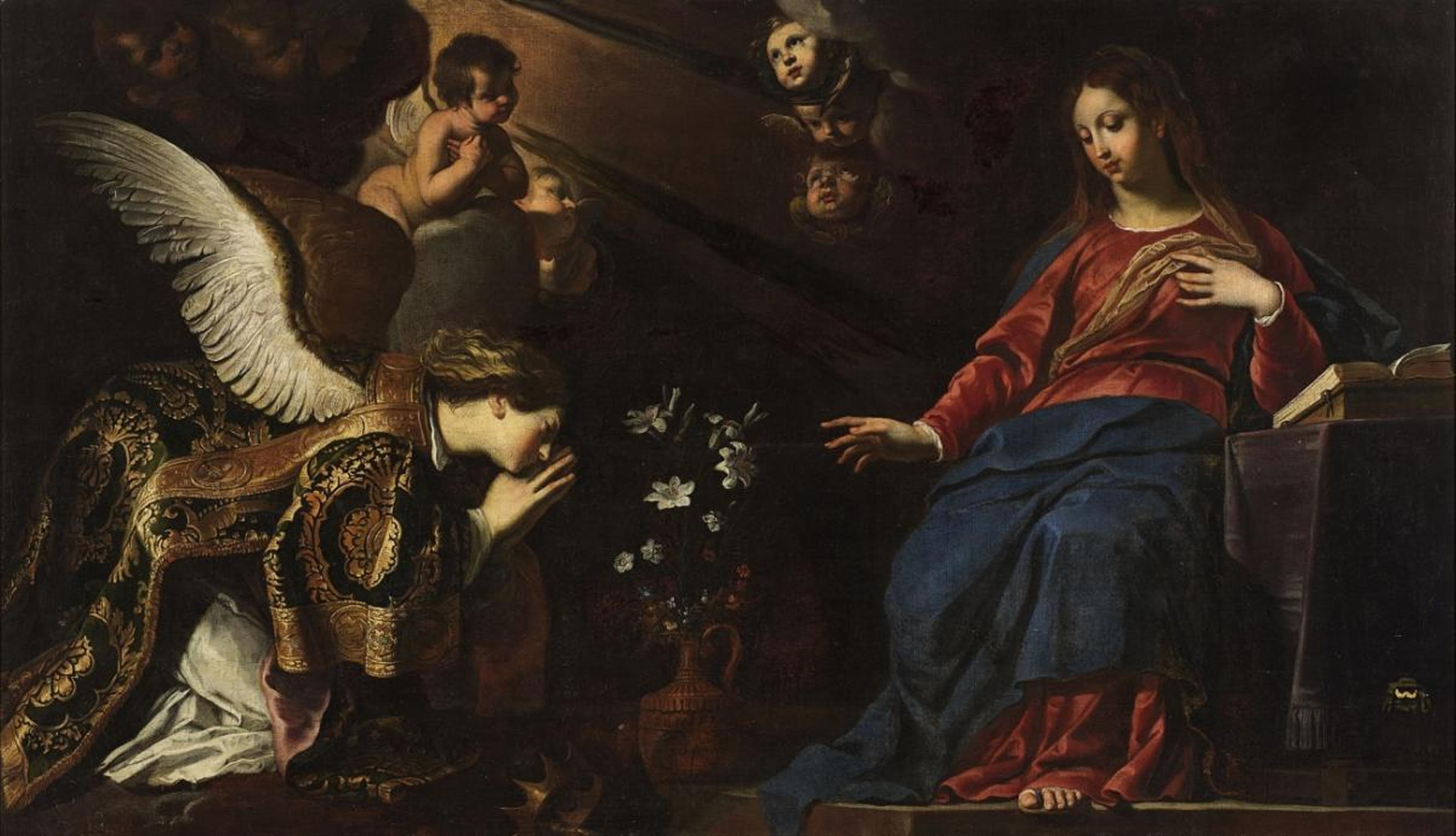Gerard Seghers
THE ANNUNCIATION
Oil on canvas (relined). 119.5 x 206.5 cm.
This "Annunciation" is a masterpiece by the Flemish Baroque painter Gerard Seghers, which first appeared at the turn of the millenium in a Dutch private collection and was written about in great detail by Jan Vaes in two essays in 2004/5. The work was created in the 1620s, presumably commissioned by Antoon Triest (1577-1657), the Bishop of Bruges (1616-1622) and Ghent (from 1622), whose coat-of-arms can be seen in the lower right corner, and who also commissioned works by Rubens and van Dyck. It is unclear whether the painting was originally intended for the altar dedicated to the Virgin in the Jesuit Church of St. Michael in Kortrijk, consecrated in 1620, or whether it was brought there later - in the 18th century at the latest. The "Tydscronyck" of Jan Baptist Filleul (1775-1855), which is kept in the town library of Kortrijk, certainly confirms that the painting was sold for 15 francs on 11th February 1800 during the time of occupation by the French revolutionary troops and was removed from the church then. After this, the whereabouts of the important altar painting were unknown until it was rediscovered in the Dutch private collection in which it was kept since 1980.
Alongside Rubens, van Dyck and Jordaens, Gerard Seghers was among the most significant representatives of Flemish Baroque painting. Born in Antwerp, he is already recorded as a "free master" of the Guild of St. Luke there from the age of 17. He resided in Italy and Spain from 1611 to 1620, where he was primarily influenced by Caravaggio and his pupil Bartolomeo Manfredi. From the late 1620s, his palette became lighter, and he welcomed the influence of Peter Paul Rubens. The composition of this work strongly displays the Caravaggesque style, for example in the prominent foot of the Virgin on the lower edge of the painting. It is dominated by the two protagonists of the annunciation, the Virgin on the right, who is depicted from below, and the deeply bowing angel on the left with its wings outstretched and dressed in opulent brocade robes. A vase of flowers is shown between the figures, whereby the lilies represent the Virgin's purity and the vase symbolises her function as the vessel in which Christ was made man. A beam of light from the upper left illuminates the otherwise dark scene, and adoring putti and cherubs close the composition in the upper edge.
Provenance
Saint Michael, Kortrijk. - 1800 sold for 15 francs. - Since 1980 in a Belgian private collection.
Literature
Jan Vaes: Een aankondiging van formaat: Gerard Seghers' (1591-1651) Kortrijkse ‚Aankondiging' weergevonden in Limburgs bezit, in: Van Tijd tot Tijd 2, 2004, p. 10-18. - Jan Vaes: Een aankondiging van formaat. Gerard Seghers' (1591-1651) Kortrijkse ‚Aankondiging' weergevonden, in: De Leiegouw 47, 2005, p. 59-73.

